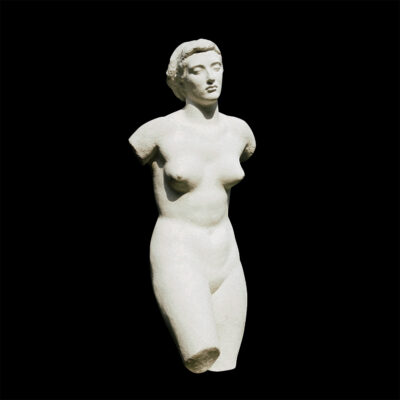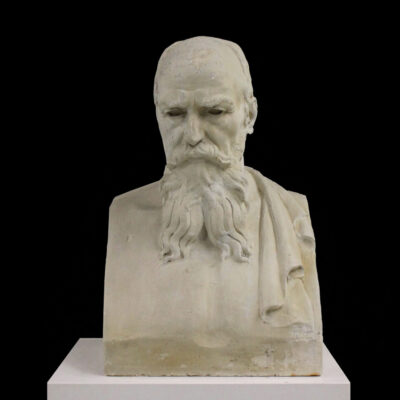The section dedicated to the work of sculptor Ercole Drei of Faenza offers a glimpse of early twentieth-century art, still prevalently figurative and based on academic models. The small but significant selection of works in the MAGI’900 collection ideally documents the various phases in Drei’s work, from his private portraits to the theme of exaltation of labour typical of the Thirties and his later monumental projects for public spaces, allowing visitors to appreciate the solid elegance of the style of an artist who significantly interpreted the evolution of private and monumental sculpture in Italy.

Ercole Drei
LA BIOGRAFIA
Ercole Drei began studying drawing and sculpture at “T. Minardi” school of arts and trades in Faenza, and in 1905 he enrolled in the fine arts academy of Florence, where he attended Augusto Rivalta’s sculpture courses and met Giovanni Fattori. He participated in the Biennale in Venice for the first time in 1912, and the following year he won the Pensionato artistico nazionale di scultura, a national sculpture award presented by the fine arts academy of Rome. It was in this city, in the heyday of Symbolism, that he participated in two editions of the Secession in 1914 and 1915. Influenced by international Symbolist currents, and active as both a sculptor and a painter, Drei was also a successful craftsman, producing a refined series of ceramic and bronze items in the style of the day. After the war he focused on monumental sculpture: in 1921 he created the monument to Nazario Sauro in Ravenna and the L’insurrezione group for the monument to Vittorio Emanuele II in Rome. Public works dating from this time include a number of monuments to the fallen (in Bagni della Porretta, 1924, in Savignano di Romagna, 1924, in Fusignano, 1925, and in Granarolo, 1926) and a bronze and aluminium Quadriga for the courthouse in Messina, designed by M. Piacentini (1927). This production in classical style was flanked by sculptures and portraits of a more introspective nature, featured in a series of exhibitions which saw the artist participate in the Biennale exhibitions in Venice and Rome, exhibitions of the Amatori e Cultori in Rome, and prestigious exhibitions of Italian art abroad (Buenos Aires in 1923, Barcelona in 1929). In June of 1923 he exhibited at Bragaglia art gallery in Rome, and in 1926 he participated in the first exhibition of twentieth-century Italian art, held in Milan. In 1927 he was awarded a professorship in sculpture at the fine arts academy of Bologna, a position he was to hold for the next thirty years, also serving as director between 1952 and 1957. By the Thirties Drei was a well-known artist, as demonstrated by his first solo show at the Associazione artistica arts association in Rome, his appointment as a member of the Accademia Clementina in Bologna (1934) and the prize he won at the 3rd Quadriennale in Rome (1939). He best-known works date from this time, flourishing under the cultural policies of the fascist era: in 1932 he created two groups for the Sepulchre to fallen fascists at the Certosa in Bologna and the big statue of Hercules at the Stadio dei Marmi stadium in Rome. Also in Rome, he sculpted the monument to Alfredo Oriani at Colle Oppio (1935), a number of bas-reliefs for Duca d’Aosta bridge (1939) and the Il lavoro dei campi pillars for the E42 road. In 1940 he was appointed a member of the Academy of San Luca. After the second world war, the artist continued his career, staying true to his style with figurative sculptures in classical style, and, consistently with this orientation, became a member of the Superior Council of Antiquities and Fine Arts.





